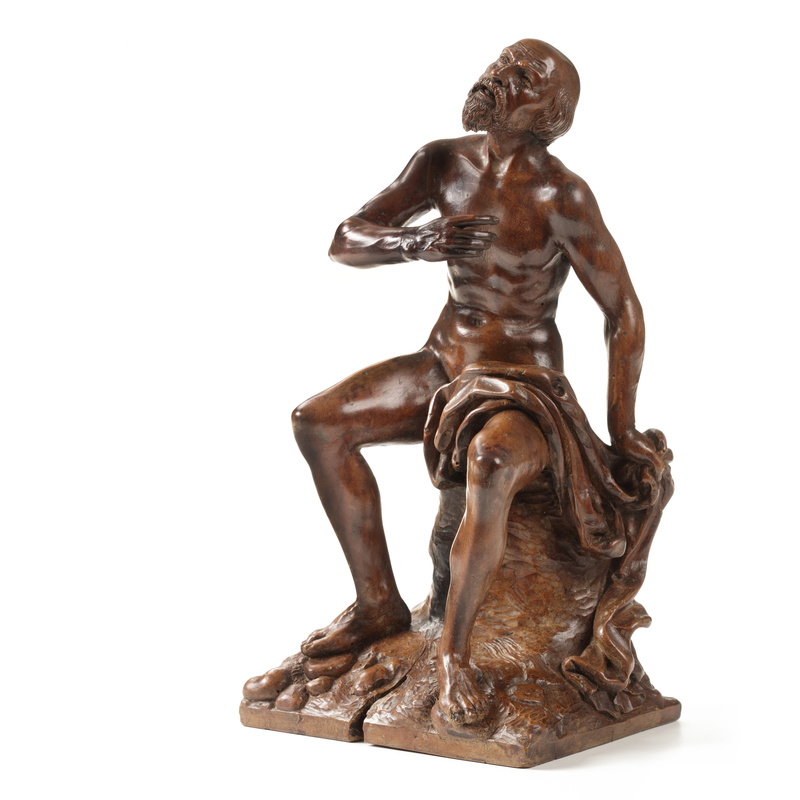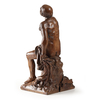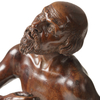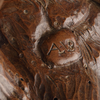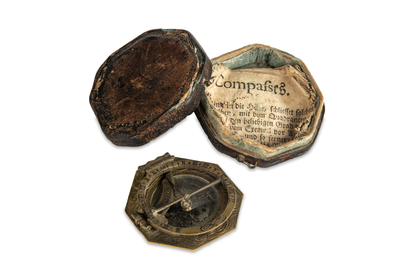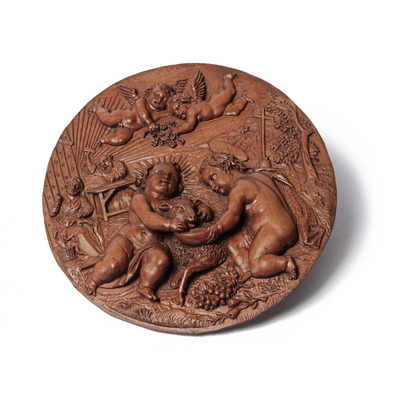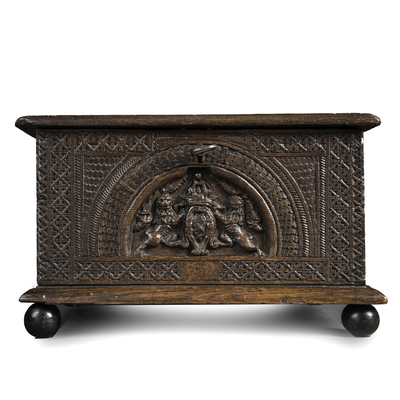Exceptional boxwood sculpture of Job on the dung heap by Albert Jansz. Vinckenbrinck
Global shipping available
- Maker
- Albert Jansz. Vinckenbrinck
- Origin
- Amsterdam
- Period
- Ca. 1645-1664
- Material
- Boxwood
- Signature
- ·AL·VB·, AL in ligature, VB in ligature on a boulder near the left foot
- Height
- 28.5 cm
- Width
- 14.5 cm
- Depth
- 13 cm
- Literature
Bruil & Brandsma Works of Art, Albert Jansz. Vinckenbrinck, beeltsnyder (Amsterdam 2020).
M.J. Bok, 'De Utrechtse verwanten van de beeldsnijder Albert Janszn Vinckenbrinck', Amstelodamum 83 (1996), pp. 167-172.
J.A.C. Dudok van Heel, 'De werkplaatsen van de beeldsnijder Albert Janszn Vinckenbrinck', Amstelodamum 83 (1996), pp. 173-177.
M. Eisma, In beeld gebracht. Beeldhouwkunst uit de collectie van het Amsterdams Historisch Museum, Zwolle, 1995, p. 209, 210, no. 139.
M. Eisma, 'Albert Jansz Vinckenbrinck, ontwerper en beeldsnijder', Amstelodamum 83 (1996), pp. 33-43 .
D. Franken, ‘Albert Jansz Vinckenbrinck’, Oud-Holland, V, (1887), pp. 72-92 .
W. Halsema-Kubes, ‘Kleinplastiek van Albert Jansz. Vinckenbrinck’, Bulletin van het Rijksmuseum, XXXIX, 4, (1991), pp. 414-425.
T. Lunsingh Scheurleer, ‘Nieuws over den Amsterdamschen beeldhouwer Albert Vinckenbrinck’, Oudheidkundig Jaarboek. Bulletin van den Nederlandschen Oudheidkundigen Bond 13 (1946), pp. 29-33 .- Provenance
Private collection, 2002
Ronald Klein, dealer in archaeological findings, 2002
De Eenhoorn, presented on the Art & Antiques Fair ’s Hertogenbosch, 2002
Private collection Van der Vorm, Belgium, 2002-2019
Collection art dealer Jan Beekhuizen, 2019
Bruil & Brandsma Works of Art, 2019
Questions about this object?
Please use one of the contact options below:
Description
We have recently produced a high-quality publication featuring Vinckenbrinck's oeuvre. To order this publication, please make a request.
This exceptional and finely carved palmwood sculpture of 'Job on the dunghill' was made by the Amsterdam woodcarver Albert Jansz. Vinckenbrinck (1605 - 1664). The naked Job, with sores on his body, is depicted seated with his head turned towards heaven. The sculpture shows the refined work of Vinckenbrinck, who like no other was able to apply detail and expression to the hard palm wood.
The depiction of Job on the dunghill' occurs more often in Vinckenbrinck's oeuvre. It is noted in his estate inventory that 'Hiob op den mest hoop carved as before' and there are three plaques with this scene in the collections of the Rijksmuseum Amsterdam (inv. no. BK-15435), the Amsterdam Museum (inv. no. BA 4103) and the artists' society Ars Aemula Naturae (inv. no. B-595). In seventeenth-century Dutch art, Job was not exactly a much sought-after biblical image. Yet Vinckenbrinck carved it at least four times, presumably in connection with the Zwinglian Calvinism that Albert Vinckenbrinck espoused, in which man's misery and God's grace are central, not good works and indulgences.
Albert Jansz. Vinckenbrinck was baptized on April 3th, 1605 in the Nieuwe Kerk in Amsterdam. Years later he would manufacture the exceptionally beautiful and exuberant 13-meter high hexagonal pulpit and immense sounding board with a Gothic tower, where his knowledge and skill of woodcarving, and in particular of perspective depth effects, were fully expressed. Jan Albertsz. Vinckenbrinck, Albert's father, came from Esens, East Frisian, and settled in Amsterdam as a box maker. Albert Jansz. followed in the footsteps of his father, and shared a workshop with him for quite some time. In 1629 Albert Jansz. Vinckenbrinck bought the furniture and tools of the deceased sculptor Cornelis van den Bloocke at an auction and he appealed to "beeltsnyder". He evolved into a particularly virtuoso woodcarver, specialized in cutting palm wood and became a well-known name in the Dutch Renaissance. The small oeuvre of works of art that has survived time is of great quality and eloquence.
In addition to large works for architectural use, such as the pulpit in the Nieuwe Kerk and various decorative domestic elements such as fireplaces, gates, doors and mouldings, Vinckenbrinck also produced small wood carvings. A few carved portraits, plaques, sculptures and memento mori skulls are known from him. A frequently recurring personal theme in his work is the life and suffering of the biblical figure Job. After 130 years of research, about fifteen signed works by Vinckenbrinck in palm wood are now known. Apart from this sculpture, there is one other three-dimensional small sculpture by Vinckenbrinck known, an Adam and Eve in the collection of the Museum für Kunst und Gewerbe, Hamburg, inv. no. 1957.32. This sculpture is characterised by the same level of detail as the Job on the dunghill. Several of these small works are mentioned in the inventory drawn up at the time of Vinckenbrinck's death, and could therefore have been carved for personal use or as an example for clients.
